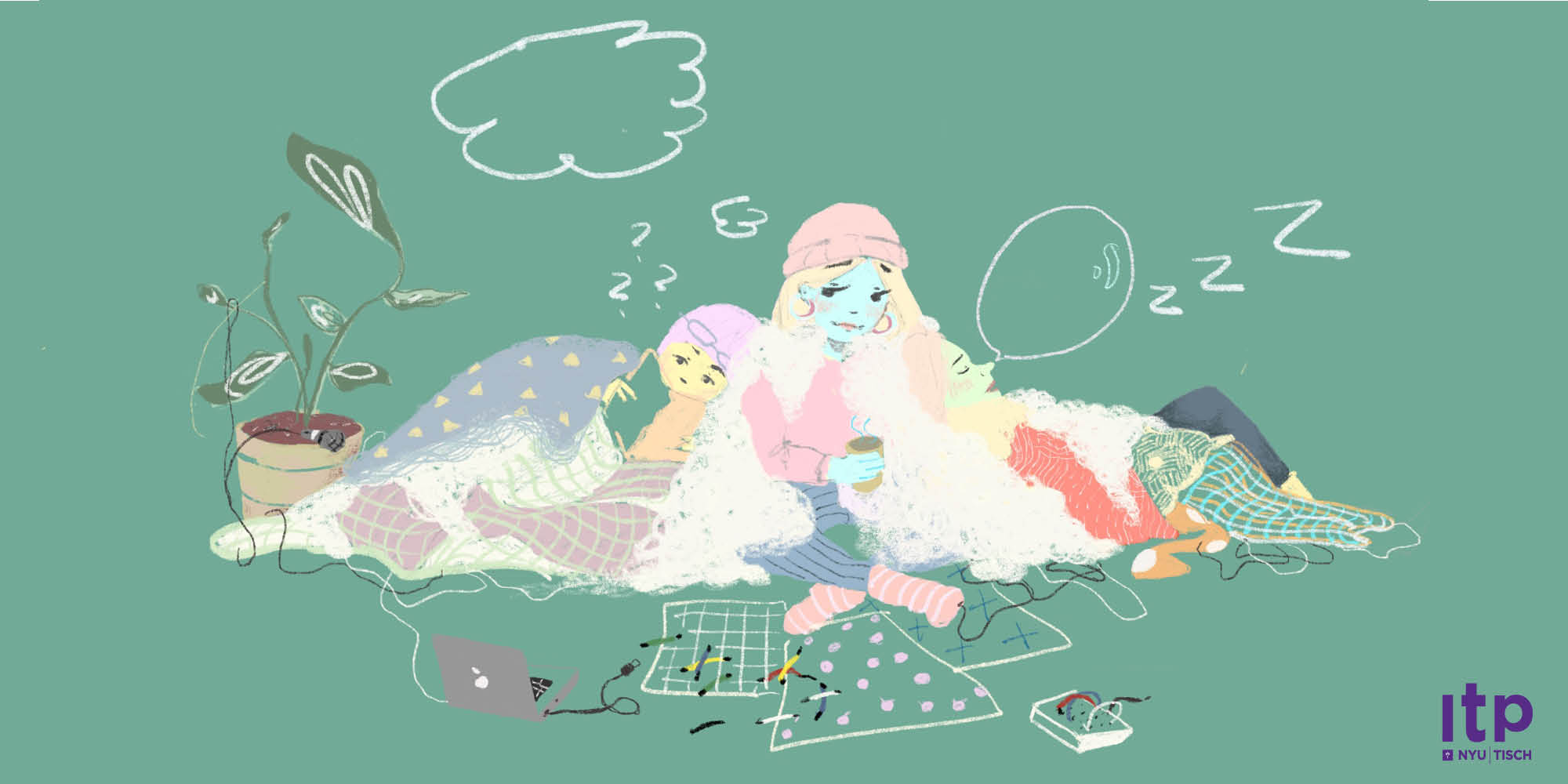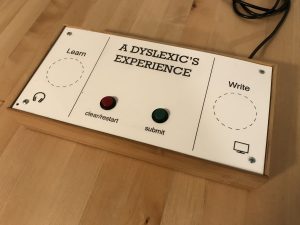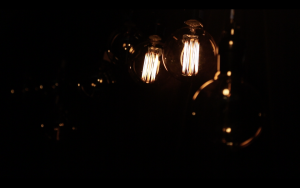Eva Philips
A Dyslexic’s Experience is designed for users to face the challenges that individuals with language based learning disabilities encounter, by learning and writing with a new visual representation of the alphabet.
https://www.evaphilips.com/itp-winter-show-2018
Description
One in five people have a language based learning disability, the most common of which is dyslexia. However, most of the population, even some dyslexics themselves, misunderstand the disability completely. Dyslexia effects the part of the brain that processes language and thus, most dyslexics have difficulty decoding sounds and relating them to letters. This slows their reading rate and makes spelling a challenge. A Dyslexic’s Experience is a project designed for anyone to understand this language processing barrier first hand. Throughout the interaction the user will learn and spell words using a visual representation of the alphabet designed by measuring the volume inputs of spoken letters and drawing circles with radii based on that input. The barrier between the user and this new alphabet is meant to recreate the challenges individuals with learning disabilities face. When the user scans a symbol from the visual alphabet in the ‘learn’ section of the board, the corresponding letter will play over the headphones. Requiring the users to learn the alphabet by matching the oral sounds of letters to the symbols is meant to highlight the difficulty dyslexics have decoding sounds. Once the user learns enough letters to make a word, they will scan the letters one at a time in the ‘write’ section of the board. As they scan, their word will be displayed on the screen and they can submit it into the library of words written by previous users. The symbols that make up the alphabet are purposely similar yet unique in order to make the interaction somewhat challenging. In conclusion, the user will gain a first hand experience of a dyslexic’s learning differences.
Classes
Introduction to Physical Computing



